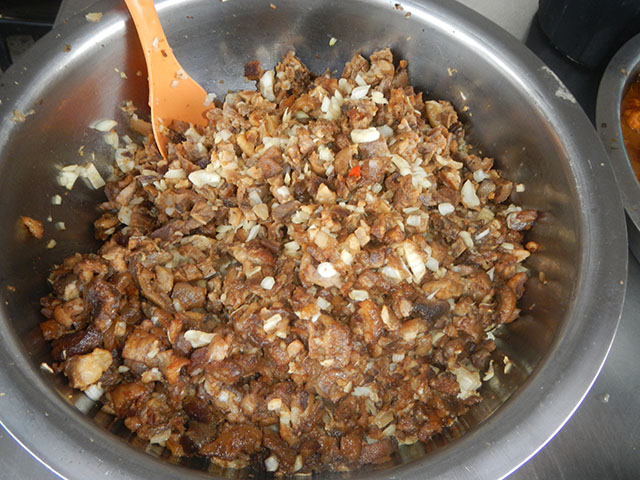Sisig is a dish Filipinos will always look for wherever they go. Even international culinary expert Anthony Bourdain was smitten by the delicacy. While the dish has been developed throughout the years to cater to different palates and standards, there are those who still remember the dish before it came to be adored by the public.
The real sisig?
One Twitter user, a Kampapangan, has taken the story of “real sisig” to the online sphere.
The real #sisig is not served in sizzling plates, has no mayo, no egg, no hot sauce, no soy sauce (wtf?). The secret comes not from the condiments but the method of cooking – parboiled then roasted to crisp perfection and chopped. I'm speaking as a Kapampangan.
— Pete Sengson مجاهد (@petesengson) May 22, 2018
According to Twitter user Pete Sengson, the sisig of old was different from what is usually served in restaurants and watering holes around the country. The now-emblematic sizzling plate, hot sauce and runny egg had no place being served with the dish.
Fresh red onions, calamansi, and salt and pepper were all that gave real sisig its flavor.
Sengson said the “sisig” came from the Kapampangan word manisig, which means to “eat something sour.”
According to other sources however, “sisig” came from a similar Tagalog word sisigan, or “to make something sour.”

Sisig was first documented in 1732 by Diego Bergaño in his work Vocabulario de la Lengua Pampanga en Romance, a Spanish missionary who served in the clergy of Mexico, Pampanga. According to this account, the sisig encountered by the priest was a “salad, including green papaya, or green guava eaten with a dressing of salt, pepper, garlic and vinegar.”
It was also once considered a delicacy reserved for pregnant women, as it was believed that pig bones would give their children strong bones. According to some sources, sisig was even served exclusively to pregnant women.
Sisig was also used as a cure for nausea due to its inherent sourness that could suppress vomiting. From this practice came its contemporary utilization as recovery food for a hangover.
An enduring legacy
The rise of the US military bases in Central Luzon saw local eateries purchase pig heads and other parts from the canteens of these bases. It was through this practice that the modern day version of sisig was born.
The late Lucia Cunanan or “Aling Lucing” is credited with developing the modern-day sisig served at most restaurants around the country.
In the 1970s, she opened up a small eatery by the railroads in Angeles, Pampanga where the class dish was served on sizzling plates. Pig brains and chicken liver were added to give her version a different texture from the traditional sisig.
This version of the dish would become widely popular, even with the affluent.
Recent times have seen the rise of different variations of sisig. A popular fastfood joint recently introduced the “sisig bowl”—fried chicken bits served with elements of sisig such as mayonnaise, garlic leaks, and “sisig sauce.”
Other restaurants and chefs have also substituted pork for chicken and fish as its main component.









